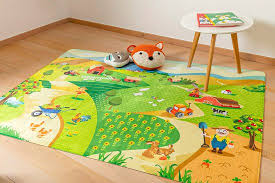In the journey of parenting, creating a safe and stimulating boxkleden environment for your baby is a top priority. One essential item that can make a significant difference in your baby’s early development is a playmat. These versatile mats not only provide a comfortable space for your baby to explore but also contribute to their cognitive, sensory, and motor skills development. Here’s an in-depth look at the world of playmats and how they benefit your little one.
What is a Playmat?
A playmat is a padded, often colorful mat designed to provide a soft and safe surface for babies to play on. Typically made from materials like foam or fabric, playmats come in a variety of designs, textures, and sizes. They can range from simple mats to more elaborate setups featuring interactive elements such as toys, mirrors, and textured surfaces.
Benefits of Playmats
- Safety and Comfort: The primary function of a playmat is to offer a cushioned surface for babies, which is crucial as they learn to roll, crawl, and eventually walk. The soft padding helps protect delicate bones and joints from hard floors and potential falls.
- Sensory Stimulation: Many playmats are designed with various textures, colors, and patterns to engage a baby’s senses. High-contrast colors and different fabric textures stimulate visual and tactile exploration, aiding in sensory development.
- Motor Skill Development: As babies spend time on their playmats, they practice essential motor skills. Reaching for toys, rolling over, and eventually crawling all contribute to the development of coordination and muscle strength.
- Interactive Features: Some playmats come with built-in toys like hanging rattles, mirrors, and activity arches. These features encourage babies to reach, grasp, and bat at objects, which supports hand-eye coordination and fine motor skills.
- Ease of Use: Playmats are typically easy to clean and maintain. Most are machine washable or can be wiped down with a damp cloth, making them a practical choice for busy parents.
Choosing the Right Playmat
When selecting a playmat, consider the following factors:
- Material: Opt for non-toxic, BPA-free materials that are safe for babies. Foam playmats are popular for their cushioning, while fabric mats offer softness and can often be more visually stimulating.
- Size: Ensure the playmat is large enough to accommodate your baby’s activities and provide ample space for movement. A larger mat can also be beneficial as your baby grows and starts exploring more.
- Design and Features: Choose a design that suits your baby’s developmental stage and interests. Mats with interactive elements can be particularly engaging, while simpler designs might be more appropriate for very young infants.
- Portability: If you plan to use the playmat in different areas of your home or take it on the go, consider a mat that is lightweight and easy to transport.
Tips for Using a Playmat
- Supervision: Always supervise your baby while they are on the playmat, especially if it includes hanging toys or other interactive features.
- Variety: Rotate different toys and features on the playmat to keep your baby engaged and interested.
- Cleanliness: Regularly clean the playmat to maintain a hygienic play environment.
Conclusion
Playmats are more than just a soft spot for your baby to lie; they are a valuable tool in early development. By providing a safe and stimulating environment, playmats support sensory, motor, and cognitive growth, making them a worthwhile investment for any parent. Whether you choose a simple mat or one with a host of interactive features, the right playmat can make a world of difference in your baby’s developmental journey.

